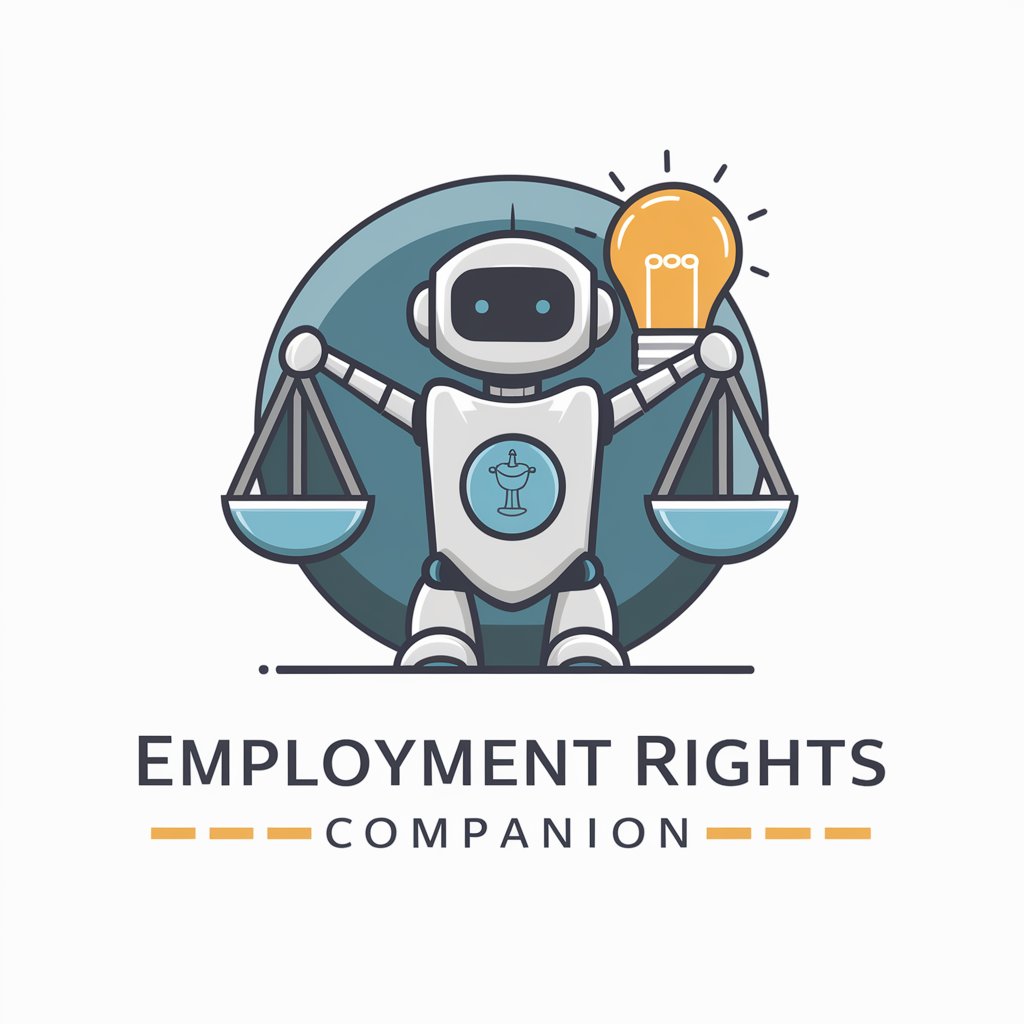
South African Employment Act - South African Employment Guide

Welcome! Let's explore your employment rights in South Africa.
Navigate employment law with ease
What are my basic employment rights in South Africa?
How does the South African Employment Act protect workers?
Can you explain the regulations around working hours in South Africa?
What are the provisions for maternity leave according to South African law?
Get Embed Code
Introduction to the South African Employment Act
The South African Employment Act, officially known as the Basic Conditions of Employment Act, 1997, is designed to regulate basic conditions of employment, enforce fair labor practices, and ensure the health and safety of employees in South Africa. This Act is pivotal in advancing economic development and social justice within the workplace. An illustrative example includes the provision that employers must regulate working hours to ensure they do not exceed the maximum limits, safeguarding workers' health and promoting a balance between work and personal life. Furthermore, it specifies conditions around leave entitlements, such as annual and maternity leave, ensuring employees are granted necessary rest and family time. Powered by ChatGPT-4o。

Main Functions of the South African Employment Act
Regulation of Working Time
Example
Setting maximum working hours and providing guidelines for overtime pay.
Scenario
An employer is required to ensure that an employee does not work beyond 45 hours a week and is compensated at one and a half times their normal wage rate for any overtime work, promoting fair labor practices.
Leave Entitlement
Example
Mandating annual leave, maternity leave, and sick leave.
Scenario
An employee is entitled to at least four consecutive months of maternity leave, supporting the well-being of the mother and child post-birth.
Protection of Employee Rights
Example
Prohibiting child labor and ensuring the right to fair remuneration.
Scenario
Prohibiting the employment of children under the minimum legal working age and setting forth conditions under which children may work, thus safeguarding their rights and development.
Ideal Users of South African Employment Act Services
Employees
All workers in South Africa, including part-time, full-time, and contractual employees, stand to benefit from understanding their rights and protections under the Act, such as work hours, leave entitlements, and termination notices.
Employers
Business owners, HR professionals, and managerial staff across various sectors can utilize the Act to ensure compliance with labor laws, foster a fair working environment, and avoid legal disputes.

Guidelines for Utilizing the South African Employment Act
Begin with a free trial
Start by visiting yeschat.ai for a complimentary trial that doesn't require any login or subscription to ChatGPT Plus, ensuring easy access to the tool.
Identify your needs
Determine the specific employment issues or questions you need assistance with, such as understanding basic employment conditions, leave entitlements, or termination procedures under the South African Employment Act.
Explore use cases
Familiarize yourself with common use cases and scenarios where the South African Employment Act can provide guidance, such as calculating overtime pay, managing employee leave, or ensuring compliance with working hours regulations.
Utilize provided resources
Make use of the provided resources and tools within the platform to gain insights into the Act, including detailed guides, Q&A sections, and interactive tools for calculating employment benefits and obligations.
Seek further assistance
For complex issues or situations that require personalized advice, consider seeking further assistance through the platform's contact options or consult with a legal professional specializing in South African employment law.
Try other advanced and practical GPTs
Singapore Employment Dispute Navigator
AI-powered guide for employment disputes in Singapore.

Employment Planning Master
AI-Powered Career Accelerator

Information on Employment
AI-powered insights into Walmart careers

AI employment consultant
Empowering Your Career Journey with AI

Equal Opportunity Employment
Harness AI for Fairer Employment

Employment and Career Advisor
AI-powered Career Navigation

Malaysia Employment Act Advisor
Empowering employment law understanding with AI

Labor & Employment Law Tutor
AI-Powered Law Tutoring Redefined

MoCo Employment Law Assistant
Navigating Employment Law with AI

Employment Assistant
AI-powered career coaching at your fingertips

Thailand Employment Navigator
Navigating Thai Employment with AI

Employment Doc Analyst
Empower Your Employment Decisions with AI

Q&A on the South African Employment Act
What basic conditions of employment does the South African Employment Act regulate?
The Act establishes and enforces minimum conditions of employment, such as working hours, leave entitlements, termination procedures, and protections for child and forced labor, aiming to ensure fair labor practices.
How does the Act protect employees working overtime?
It stipulates maximum overtime hours, requires agreements for overtime work, and mandates at least one and a half times the normal wage rate for overtime hours worked, ensuring employees are fairly compensated.
What are the provisions for annual leave under the Act?
Employees are entitled to a minimum of 21 consecutive days of annual leave per leave cycle, or by agreement, one day for every 17 days worked, promoting rest and recreation for employees.
How does the Act address the termination of employment?
It outlines the required notice periods for termination by either party, provides for severance pay under certain conditions, and specifies procedures for issuing a certificate of service upon termination.
Can the basic conditions of employment be altered?
Yes, collective agreements in a bargaining council can alter or exclude certain basic conditions of employment, provided they do not diminish the protections afforded by the Act and are consistent with its purpose.





